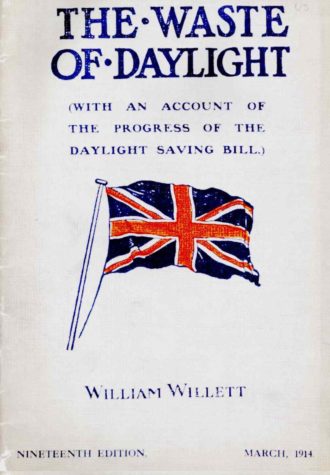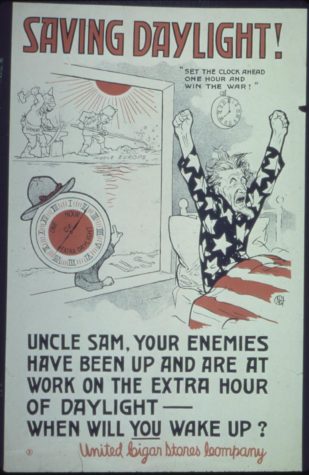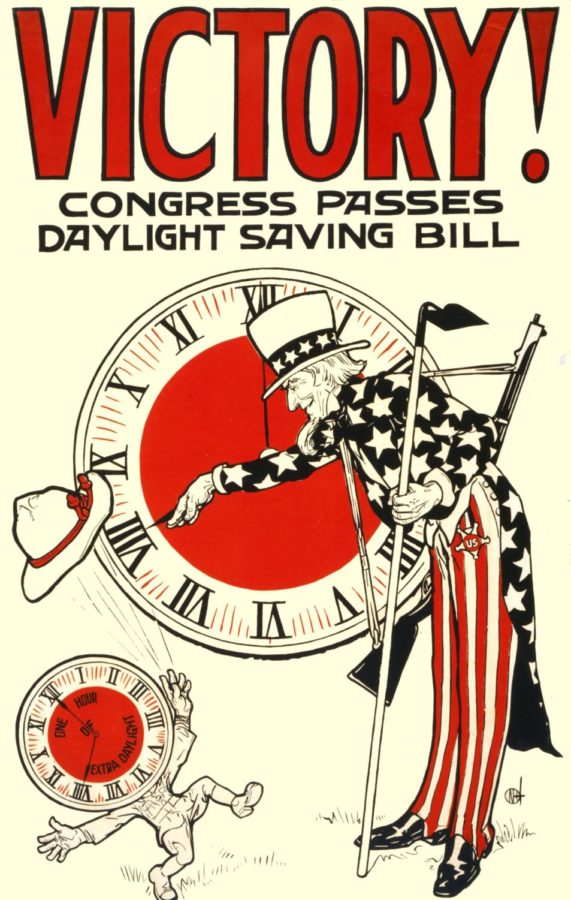Springing Foward and Falling Back: The History of Daylight Saving Time
March 15, 2018
Note: “Saving” is not plural, and this isn’t the only peculiarity about this system.
Daylight Saving Time receives mixed reviews depending on the time of year. During the fall when we get an extra hour of sleep, it is considered one of the best inventions “since sliced bread”. However, in the spring, we dread its approach and when the day inevitably arrives, the loss of that one crucial hour causes an incredibly sleep-deprived nation.

Historically, the idea behind Daylight Saving Time has been accredited to Benjamin Franklin. However, he didn’t actually create it, just appreciated the principle behind it. While in France, Franklin started to wake up with the sunrise at 6 a.m. He then proceeded to contemplate how much money could be made if people would base their schedules off of the sun instead of the clock, rising with the sun, and going to bed when it turned dark. After this deduction, Franklin proceeded to write an essay explaining his opinion and evidence supporting this idea. Interestingly enough, Franklin never officially put it into practice.

While out on a horseback ride in England early in the morning, a man named William Willett had a sudden realization that by moving all the clocks in England forward by eighty minutes, more people would be able to enjoy the sunlight during the winter time. He then proceeded to publish a pamphlet detailing why England should adopt this new time change. Unfortunately, Willett was never able to get the British Parliament to pass his idea. Instead, Germany adopted the principle during World War I as a way of conserving electricity. A few weeks later, Britain put the idea in practice as well as a war-time measure.
With its success in Europe, the idea of Daylight Saving Time quickly spread to the United States. In 1918, Daylight Saving Time was implemented for the first time. However, farmers were strongly against it. Instead of giving farmers more hours of sunlight to work by, it just increased the amount of work the farmers had to do. With the cows needing to be milked at the same time every day, and the need for the dew on hay to evaporate before harvesting could begin, farmers strongly disliked this change of schedule. Because farmers across the country joined together in protest, in 1919, Daylight Saving Time was repealed by Congress after overriding President Wilson’s veto. With no national policy, some cities such as Chicago continued to observe the time change, while others did not. The result was confusion. During World War II, it officially returned but was quickly repealed again three weeks after the war ended. This only served to add to the confusion faced by Americans across the country as many still shifted their clocks, leading to time-related chaos across the country. Finally in 1966, the Uniform Time Act was passed, officially recognizing Daylight Saving Time. Despite this act, many places still do not participate in Daylight Saving Time. For example, Hawaii and Arizona, do not recognize it and many Amish communities do not participate in it either. Altogether, only about seventy countries around the world observe Daylight Saving Time, posing the question of whether or not it truly makes a difference if a country participates in it or not.
William Willett came up with the idea and the historical context surrounding its creation. I think I can speak for the majority of our school when I say that Daylight Saving Time is wonderful in the fall but terrible in the spring, and that America has had a love-hate relationship with this idea ever since it was first enacted in 1918.
https://www.history.com/news/8-things-you-may-not-know-about-daylight-saving-time

